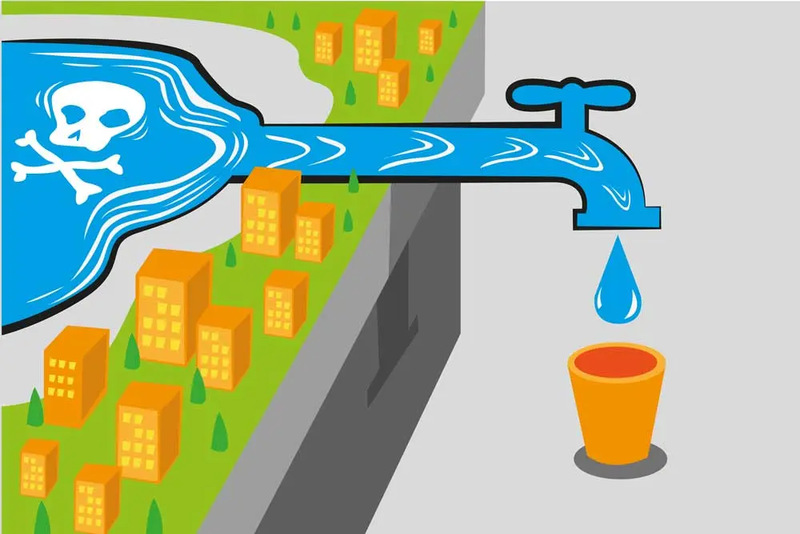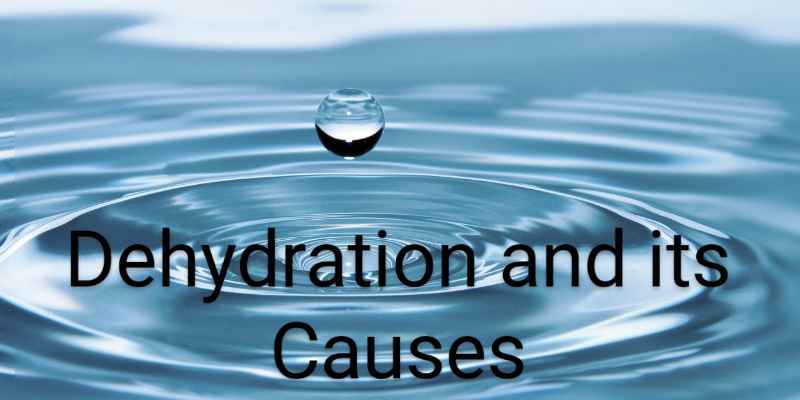Understanding the Link Between Tap Water Contaminants and Cancer
Feb 26, 2024 By Nancy Miller
Water, a fundamental life element, can significantly influence our well-being based on its quality. Lately, worries about potential cancer associations with tap water contaminants have escalated. It is imperative to comprehend this intricate relationship for making informed decisions regarding our daily water intake. Recent analytical technique advancements allow for more precise detection of trace pollutants in water. Researchers, utilizing these technologies, can identify potential carcinogens at even low concentrations. This allows for a profound comprehension of the risks linked to tap water. Ongoing research, in tandem with our evolving scientific capabilities, seeks not only to refine but also expand our understanding of the complex interactions between water quality and human health.
1. Do Tap Water Contaminants Cause Cancer?
Whether tap water contaminants contribute to cancer remains a paramount question in extensive research. Numerous studies delve into the potential connections between water pollutants and diverse types of cancer. Establishing a direct cause-and-effect relationship presents challenges. However, evidence does hint at certain contaminants potentially posing health risks.
The presence of carcinogenic substances such as heavy metals, pesticides, and industrial chemicals in tap water remains a significant concern. We have identified these contaminants in various water sources. This discovery prompts us to question their potential impact on human health. Therefore, delving into specific examples is essential. It allows an understanding of how exposure to these materials could potentially influence the development of cancerous conditions. Worldwide, the quality of tap water varies significantly. Industrial discharges and agricultural runoff. These are factors that indeed contribute substantially to contamination.

They introduce a wide range of pollutants into our water sources. The complexity of treating this water is further aggravated by two key elements. First is aging infrastructure which often fails at adequately removing harmful substances from the supply chain, a situation where it merely acts as a conduit for their transmission instead. Second is an increasing number of emerging contaminants such as pharmaceutical residues or personal care products which complicates matters even more. The need for continuous monitoring and stringent regulations to ensure tap water's safety is a focal point of researchers. They underscore this emphasis.
- Regulatory Compliance: Regularly check if your local water supplier adheres to safety regulations and standards.
- Source Awareness: Understand the potential contaminants in your region's water sources to take targeted precautions.
2. How Tap Water Contaminants Can Cause Cancer
Carcinogenic properties in certain tap water contaminants potentially initiate or progress cancer. Water-borne heavy metals, including arsenic, cadmium, and chromium, correlate with a heightened risk of specific cancers when present in the supply. Extended exposure to these substances might induce cellular damage and mutations that set conditions for developing cancerous cells. Pesticides and industrial chemicals, which indeed infiltrate water supplies, are associated with detrimental health effects such as an escalated risk of specific cancers. The mechanisms these contaminants employ to influence cellular processes within the body are complex. They involve molecular-level interactions that disrupt normal cell function and foster cancerous growth.
It is crucial to understand the bioaccumulation of contaminants in the body. Certain substances have the potential to accumulate over time, even at low concentrations in water, and reach toxic levels. Moreover, multiple contaminants may exhibit synergistic effects. This could escalate their overall carcinogenic potential. The importance of considering the cumulative impact various pollutants have on human health is emphasized by researchers.
- Bioavailability Consideration: Recognize that the bioavailability of contaminants may vary, affecting their absorption and accumulation.
- Synergistic Effects: Be aware that the combined impact of multiple contaminants may pose a more significant risk than individual substances.
3. Exploring Prevention Methods for Tap Water Contaminants
Tap water contaminants potentially pose significant health risks, thus necessitating the adoption of measures to reduce exposure. To minimize the likelihood of consuming these waterborne pollutants, consider taking practical steps. Invest in a reliable water filtration system that removes impurities and guarantees cleaner, safer drinking water for you. Regularly conduct tests on your tap water for contaminants, particularly in regions with a known prevalence of specific pollutants.

This proactive approach enables you to pinpoint potential risks and implement suitable measures. Keep yourself cognizant of the water sources available in your locality. Remain alert to any possible introduction of harmful substances. Individuals, armed with knowledge about local water quality issues, can effectively wield the power to make informed decisions regarding their water consumption. Employ boiling water as a potent strategy to eradicate specific contaminants. However, its efficacy might not extend across all types. Comprehend this method's constraints and bolster it with additional preventative measures. Apart from implementing filtration and testing, one can also mitigate exposure by exploring alternative water sources.
The practice of rainwater harvesting presents a natural, uncontaminated option that aligns with eco-friendliness. By actively promoting water conservation and pollution control within communities, we significantly enhance overall water quality. Educating communities on sustainable water practices. Furthermore, amplifies their collective understanding: it underscores the importance of preserving water quality for current and future generations.
- Rainwater Harvesting: Explore the feasibility of rainwater harvesting for a sustainable and uncontaminated water source.
- Community Education: Participate in or support initiatives that educate communities about sustainable water practices.
Conclusion
Concluding, ongoing research underscores the importance of vigilance regarding tap water quality due to potential links with cancerous contaminants. By adopting preventive measures and maintaining awareness, we can notably reduce possible health risks tied to consuming polluted tap water. In our pursuit of healthier lifestyles, understanding and confronting the intricacies of water quality take precedence. They are indeed crucial. Advocating for stricter regulations and investing in water infrastructure ensures long-term improvements in tap water safety. Individuals who actively participate in community efforts and support quality-promoting initiatives contribute to a healthier environment for all.
So, now when you are equipped with detailed knowledge of the concerns regarding tap water, you have an understanding that it’s nothing to be scared of. Awareness and caution can go a long way.

Invest in Your Skin: The Definitive Guide to Finding the Right Moisturizer for You

What are the Topmost Causes Of Dehydration?

Understanding Retinol: OTC vs Prescription Options

Get To Know What Causes HIV? Pay Attention To These Points

The Ultimate Guide to Glowing Skin: Clay and Charcoal Face Masks Unveiled

Migraine Relief Through Yoga: What You Need to Know

6 Safe Cardio Workouts for Bad Knees


